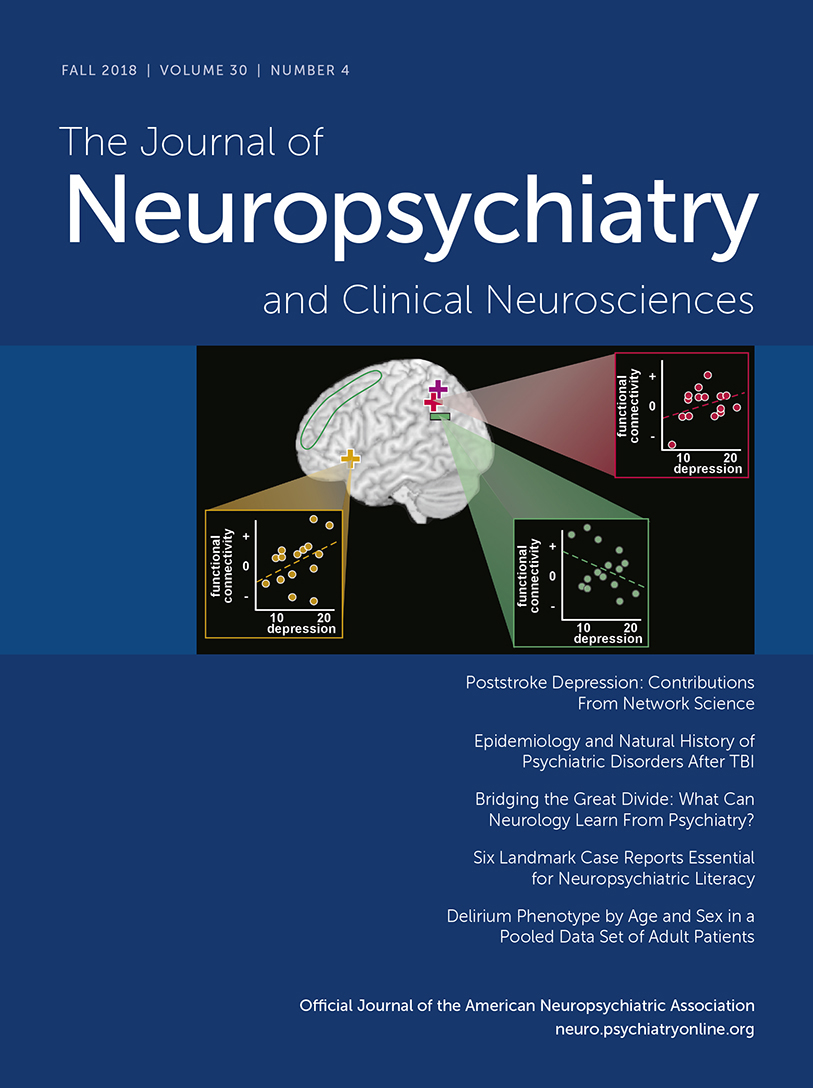Delirium Phenotype by Age and Sex in a Pooled Data Set of Adult Patients
Abstract
The authors aimed to evaluate whether the clinical phenotype of delirium differs if dichotomized either by sex or age (cutoff age, 65 years old) in a pooled sample of 406 nondemented adult patients with delirium as defined by DSM-IV criteria. Delirium characteristics were measured with the Delirium Rating Scale–Revised–98 (DRS-R-98). DRS-R-98 items were subgrouped to represent subscores representing the three core domains of delirium (cognitive, higher-order thinking, and circadian), noncore accessory symptoms (psychotic and affective), and diagnostic characteristics (temporal onset, fluctuation, and physical disorder). The authors compared means of the DRS-R-98 subscores and medians of individual items. Exploratory factor analyses evaluated delirium characteristics for each subgroup for each of the four groups—male, female, nongeriatric, and geriatric—while taking into account active medical diagnoses. Males had higher scores on motor agitation and affective lability (behavioral), whereas females had a higher frequency of hypoactive delirium. Delirium had a two-factor structure that emerged in all four study groups, and all its core domains loaded (i.e., correlated together) onto some of these two factors and with circadian domain correlating with accessory symptoms. Although the influence of a variety of active diagnoses on delirium was small and complex, traumatic brain injury had a clear influence on cognitive domain and abrupt onset. Age had a mild influence over delirium characteristics for both males and females. In conclusion, the authors confirmed a two-factor structure for delirium phenomenology, regardless of age and sex, with few significant differences between etiological groups.



